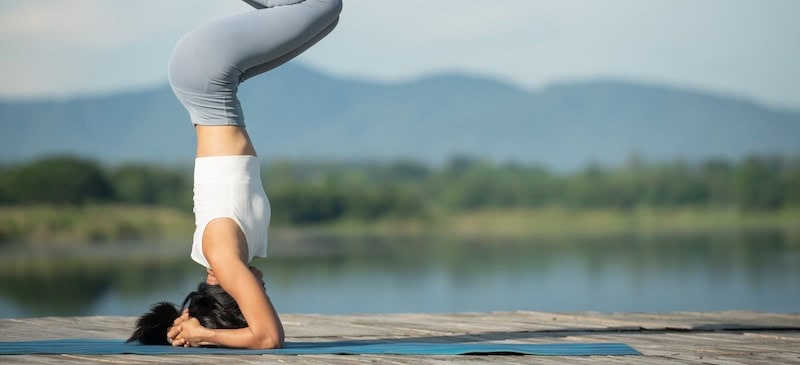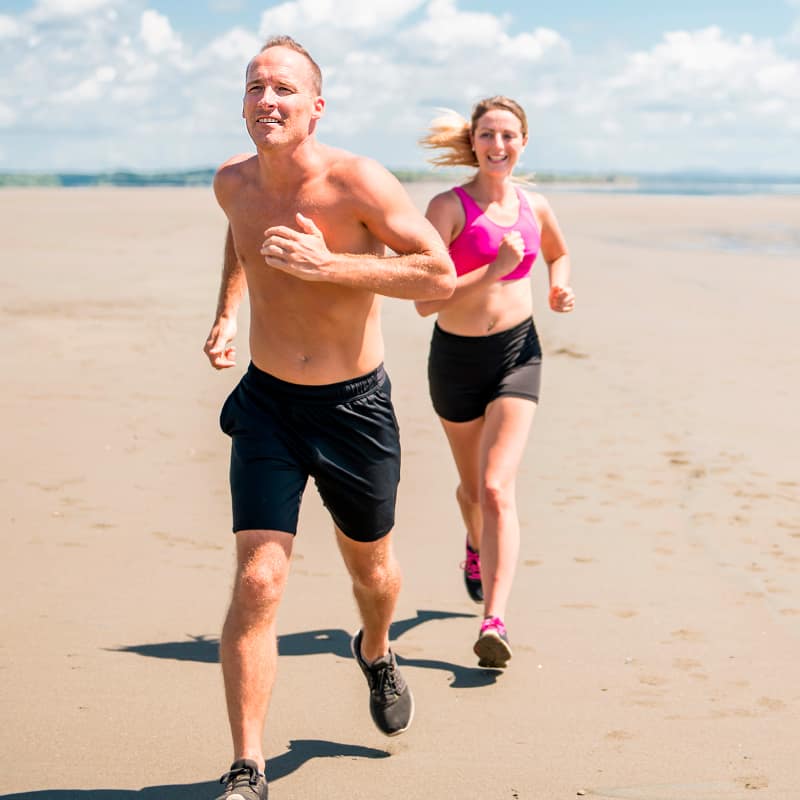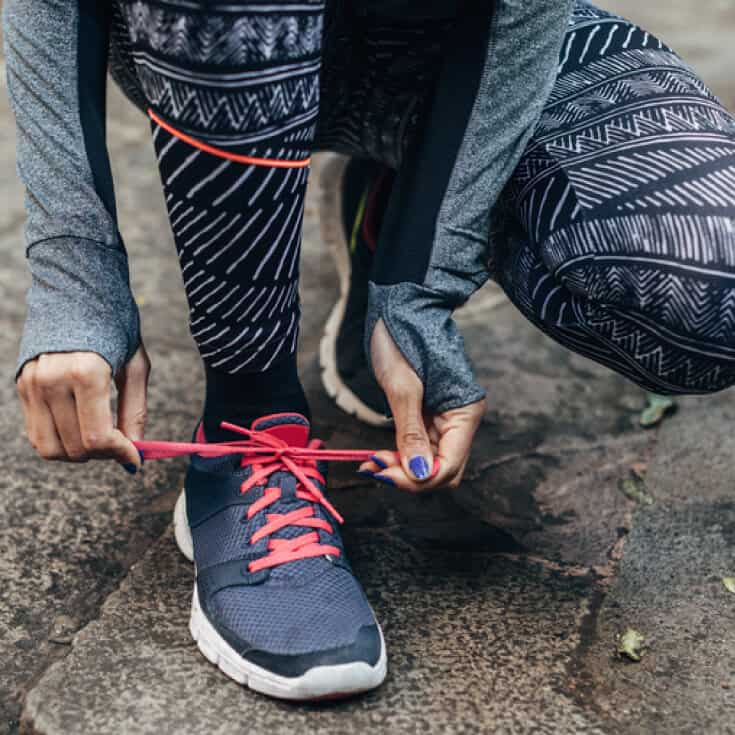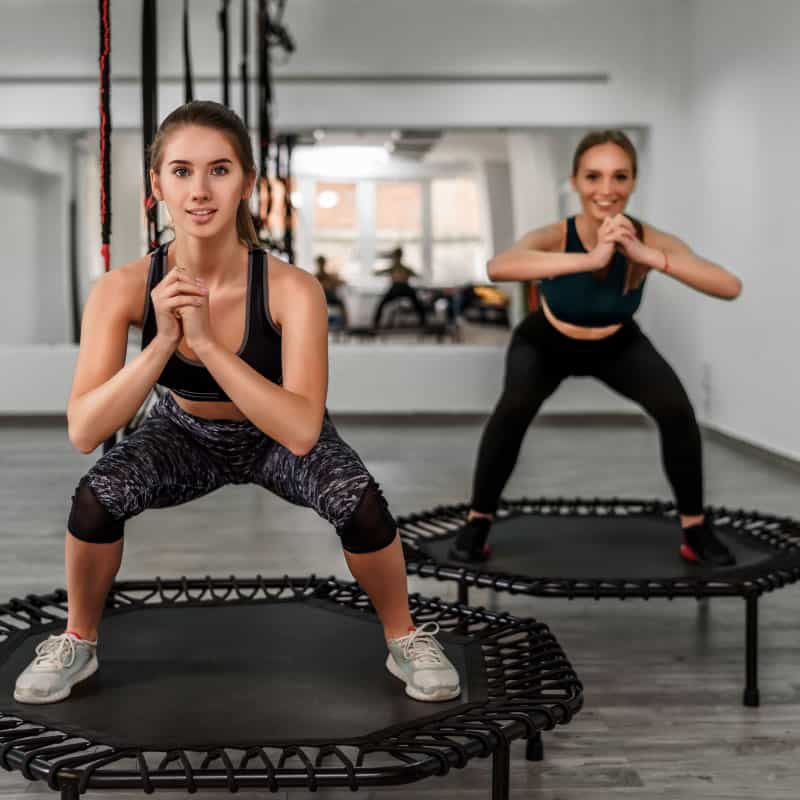This Dr. Axe content is medically reviewed or fact checked to ensure factually accurate information.
With strict editorial sourcing guidelines, we only link to academic research institutions, reputable media sites and, when research is available, medically peer-reviewed studies. Note that the numbers in parentheses (1, 2, etc.) are clickable links to these studies.
The information in our articles is NOT intended to replace a one-on-one relationship with a qualified health care professional and is not intended as medical advice.
This article is based on scientific evidence, written by experts and fact checked by our trained editorial staff. Note that the numbers in parentheses (1, 2, etc.) are clickable links to medically peer-reviewed studies.
Our team includes licensed nutritionists and dietitians, certified health education specialists, as well as certified strength and conditioning specialists, personal trainers and corrective exercise specialists. Our team aims to be not only thorough with its research, but also objective and unbiased.
The information in our articles is NOT intended to replace a one-on-one relationship with a qualified health care professional and is not intended as medical advice.
9 Common Poses Most Likely to Trigger Yoga Injuries, Plus How to Overcome & Avoid Them
June 7, 2025

According to estimates, roughly 300 million people regularly practice yoga worldwide, including more than 38 million Americans. While this form of exercise is typically a low-impact activity that is easier on the joints, yoga injuries still happen.
People have practiced yoga for thousands of years. During that time, it has earned a strong reputation for promoting well-being in both body and mind.
However, something many practitioners may not realize is that a number of commonly taught yoga poses (or asanas, as they are often called in class) can also be risky, making yoga injuries a real threat. Thus, it’s vital to take the proper precautions in order to maximize the benefits of yoga while minimizing the risk of sustaining yoga injuries.
Yoga injuries, including back pains, popped ribs and strained necks, are not necessarily a rare occurrence, especially among those who are new to yoga and push themselves too hard too quickly. Yoga poses such as handstands, inversions and back-bends might qualify yoga as moderate exercise, but these tougher poses also can be cause for concern if you’re not ready for them.
An article published in the New York Times investigating the prevalence of yoga-related injuries found that several factors seem to be related to the rising number of pulls, tears and sprains prevalent among yogis. A major contributing factor is a shift in both those who teach and practice yoga.
More than ever, adults who are mostly otherwise sedentary and unfamiliar with the practice are turning to yoga to improve flexibility and strength. While this can be helpful in many instances when students are properly guided, a tight, inactive or aging body mixed with a vigorous practice or an experienced teacher can also sometimes serve as a recipe for disaster.
Given all of the proven benefits of yoga, coupled with the potential risks, what’s a yogi to do? The solution to avoiding yoga injuries seems to be a combination of taking your time to ease in to the practice, listening to your body, never pushing yourself past the point of comfort when stretching, and mixing yoga with other exercises to strengthen weak areas and reduce compensations.
It’s also wise to find an instructor who is well-qualified, along with taking preventative measures to avoid yoga injuries.
How common are yoga injuries?
A 2012 study conducted in Australia and printed in the International Journal of Yoga found evidence that around 20 percent of all yoga practitioners claim to have experienced a yoga-related injury at some point during their time practicing the exercise.
Meanwhile, in an exclusive survey of Ashtanga Vinyasa (considered a more vigorous style), 62 percent of practitioners reported sustaining at least one injury lasting longer than one month. A 2013 review published in the journal PLOSone investigated the prevalence of case reports and case series on adverse events associated with yoga, plus the most common types of yoga injuries reported and treated, and it included the Ashtanga survey responses.
The authors of this review found that among reported yoga injuries, about 35 percent affected the musculoskeletal system, 18 percent the nervous system and 9 percent vision/the eyes. Around 20 percent of those who were injured doing yoga reached full recovery, while 11 percent reached partial recovery.
Only around 1 percent reported lasting injury, and sadly even one death was found to be associated with yoga practice.
Of the 76 case studies included in the yoga-injury review, 66 injured students were found to have had no preconditions that were associated with the adverse events, while nine case reports described an aggravation of pre-existing conditions. Women experienced double the yoga injury rate as men (not surprising considering women tend to practice more often), while the mean age of injury due to yoga was about 44 years old.
On the other hand, in 2014 after examining how a national sample of yoga practitioners were affected by injuries (including how many have had to stop their practices and which injuries were most common), researchers who published a study in the International Journal of Yoga found that only about 1 percent of all yogis (only 13 people out of 2,230 people included in the study) reported experiencing side effects from their practices that led to discontinued use of yoga.
Of those who were injured, back pains and joint pains (affecting the hips, wrist and ankles) were the most common complaints. Less than one-third of those injured reported seeking medical attention.
The researchers concluded, “These findings suggest that injury due to use of yoga is an infrequent barrier to continued yoga practice, and severe injury due to the use of yoga is rare.”
While severe yoga injuries are relatively uncommon, especially when compared to other physical activities, as yoga’s popularity has surged, so has the number of reported injuries. Here are some stats and facts on yoga injuries from large-scale research studies:
- Emergency department visits: Between 2001 and 2014, approximately 29,590 yoga-related injuries were treated in U.S. emergency departments. The injury rate increased from 9.5 per 100,000 participants in 2001 to 17 per 100,000 in 2014. Older adults (65+) had the highest injury rate at 57.9 per 100,000 participants.
- Injury types: The most common injuries were sprains and strains, particularly affecting the trunk (46.6 percent of cases).
- Prevalence among practitioners:
- A systematic review found that 4.6 percent of yoga practitioners reported injuries in the past year, with serious injuries occurring in 1.9 percent of cases.
- In a study of 354 individuals, 10.7 percent experienced new musculoskeletal pain from yoga, and 21.3 percent reported exacerbation of existing injuries.
- Injury rates compared to other activities: Yoga’s injury rate is lower than many other physical activities. For instance, basketball has an injury rate of 149 per 100,000 participants, significantly higher than yoga’s 17 per 100,000, according to some estimates.
Types of yoga injuries and riskiest poses
As with any other form of physical practice, yoga should be practiced carefully under the guidance of a qualified instructor in order to reduce risk of injury. If you’ve been injured in the past or have been mostly sedentary, consider skipping some of the riskiest poses all together.
Yoga injuries are often associated with advanced poses like headstands, shoulder stands and lotus positions, and many yoga injuries result from pushing beyond one’s limits, inadequate warm-up or improper alignment.
A high percentage of yoga-related injuries seem to be caused from the following more advanced poses:
Shoulder stand (Salamba Sarvangasana) or plow pose (Halasana)
Shoulder stand and plow pose are performed while propping up the body onto the shoulders with the legs straight up in the air (or behind the head in the case of plow). According to an article published by Yoga Journal, this applies a lot of pressure to the cervical vertebrae in the neck, causing the neck to flex forward uncomfortably.
As the entire body applies pressure to the spine, injuries are possible that can radiate downward or out to the shoulders. Neck pain can result or, worse, a serious vertebrae or spinal disc problem.
It’s debatable whether shoulder stands should be performed at all, but for those who do teach the posture because it can be beneficial for things like decreasing the heart rate, experts advise using a blanket under the shoulders/neck for support and extra lift.
Other tips for reducing strains in the neck and shoulders include not pushing the neck too far forward and remaining very still in the posture without turning the head.
Headstand (Sirsasana)
Headstands can be risky because they apply lots of strain to the neck, shoulders or hands. Plus, there’s always the chance of falling and in the process throwing out the back.
First determine whether you are ready to safely try inversions by testing that you can hold down dog, forearm plank and dolphin pose for at least one to two minutes, since these build needed strength in the upper body.
Experts warn that patients with glaucoma should avoid inversions due to blood rushing to the head/eyes.
If you are going to try inversions (bringing your feet above your head) or difficult balancing poses, one of the safest ways is to use a wall for support. A wall can help catch your legs or heels, keeping you from falling backward. Many teachers advise students to use a wall while they learn for at least the first five to 10 attempts.
Another option is to use blocks under your shoulders for extra support or to have a teacher assist you and hold up your feet.
You can also skip headstand and shoulder stand all together, simply elevating your feet up a wall to relax while you lay flat on your back. This is virtually a no-risk posture but still helps cool down the body and slow the heart rate.
Backbends (including updog, lotus, bridge, wheel, cobra or camel)
Backbends involve pushing the chest or hips forward and curving the back and chest so the head extends backward.
If you have any existing neck injury or chronic back pains, avoid backbends (unless you are practicing under the supervision of an experienced teacher). Beginners should also move in to backbends with caution.
Try to guide yourself into any backbend very carefully and slowly, allowing the lower spine to be the last part of your spine to move. Never push the hips forward or the neck/head back too abruptly.
Keep your knees, thighs and feet parallel as much as possible when bending back. This will help keep the hips facing forward and prevent twists in the spine.
Feel free to use a block or bolster under your sacrum for a supported backbend, where you rest the pelvis.
Poses that pull the sciatic nerve (such as sitting on the heels in Vajrasana):
It’s been found that some practitioners who spend too much time sitting back on their heels (perhaps when teaching yoga for several hours daily) can cut off blood supply to the nerves branching from the sciatic nerve into the heels or feet.
There have been recorded instances of this causing difficulty walking, running and climbing. Too much pressure or strain applied to the sciatic nerve, which runs from the lower spine through the buttocks and down the back of the legs, is a common cause of recurrent radiating low back pain in adults.
To prevent sciatic nerve pain, stretch the legs and low back gently, give yourself enough rest between workouts, and consider treatments for lasting injuries like massage therapy or active release technique.
How to avoid yoga injuries
1. Gently stretch tight areas (avoid temptation to push too hard!)
Stretching (and similar dynamic movements like calisthenics) should always be done mindfully, gently and slowing. Take your time loosening tight areas, such as the hips, calves or hamstrings, being careful not to move too quickly into any poses.
Try to warm the body up before any vigorous practice with some dynamic stretching, since this helps loosen muscles that might be prone to pulls.
It’s OK to feel mild to moderate resistance while stretching or bending, but be careful not to push past your limits. (Some teachers call this habit “being led by the ego.”) Over-stretching ultimately only sets you back, since it can worsen existing injuries and lead to tears, pulls and other pains.
2. Reduce muscular compensations through regular strength training
In addition to doing yoga, resistance training and “functional exercise” can help reduce compensations by building strength in weak areas. Aerobic exercise is also an important component of overall health, so keep in mind that attending slow-paced yoga classes might be doing more for your brain than your body.
Focus on regularly doing cardiovascular and full-body resistance exercises several times per week based on your physical abilities. If you are weak on one side of the body, or in one particular area like your knees or hamstrings, for example, try to build strength there gradually in order to reduce placing too much pressure on other compensating body parts.
Just remember slow and steady is the safest way to go when beginning any new type of exercise.
3. Practice yoga cautiously (especially if you’re a beginner)
You should always practice yoga with a trained and qualified teacher, but still be careful to listen to your body during practice. Don’t assume that any teacher knows exactly how to modify postures to suit your specific needs, and don’t assume that you should be able to bend or move in ways that other students can.
Every body is truly different, and therefore “perfect postural alignment” might not be possible for you in some yoga positions. If a teacher ever pushes on you, pulls or applies pressure to get you further into a posture than feels comfortable, make sure to ask the teacher to back off.
4. Consider sticking to gentler styles
If you’re susceptible to dizziness, muscle cramps, or the effects of heat and dehydration, keep in mind that hot yoga (Bikram) might not be the best match for you. Try to ease your way in to any yoga practice by attending basic/beginner classes or workshops or even trying restorative/yin yoga at first, which moves at a slower pace.
Learn the foundations of yoga poses from an experienced teacher so you can build your practice safely from the ground up.
5. Use props for support
Props, including yoga blocks, straps, blankets, or even a wall or chair, can really come in handy. These are especially useful for yoga newbies, the elderly or those recovering from injuries.
Use a rolled-up blanket under the hips to help you in postures like pigeon or other hip flexor openers. If your hands don’t reach the floor in any forward bend, side bend or twist, use blocks on the floor to “bring the mat closer” and take pressure on the legs as you bend down.
Straps are useful when laying on your back and stretching the legs; just don’t pull too tightly or quickly.
Always feel free to ask your teacher for recommendations using props if you have limitations.
6. Get your doctor’s advice if you have any injuries
Work with a physical therapist or personal trainer for guidance at first if you have any existing injuries prior to beginning a yoga practice. Ask for referrals or teacher recommendations, get clearance to start a particular style if it tends to be vigorous (such as Ashtanga or Bikram), and discuss whether there are styles you should avoid.
You can also get advice from your orthopedic or chiropractor if you’re ever unsure of which postures and movements might be risky based on your limitations.
Here are some more tips to prevent yoga injuries:
- Choose qualified instructors: Ensure your instructor is certified and experienced, particularly if you’re new to yoga.
- Start with appropriate classes: Beginners should opt for classes that match their fitness levels and gradually progress to more advanced poses.
- Listen to your body: Avoid pushing into pain, and modify poses as needed to accommodate your body’s limits.
While yoga is generally a safe form of exercise, especially when compared to other activities, it’s essential to practice mindfully and under proper guidance to minimize the risk of injury.
Healthiest yoga poses
All of that said, yoga has been shown time and time again in clinical studies to offer various benefits, including reduced stress or anxiety, improved range of motion, protection against falls, healthier body image, less trouble sleeping, and much more.
A 2007 review published in Evidence-Based Complementary and Alternative Medicine including 32 articles found that yoga interventions are generally effective in reducing body weight, blood pressure, glucose level and high cholesterol. This is probably why yoga remains one of the most popular complementary/alternative practices used worldwide.
To take advantage of all that yoga has to offer in a safe way, focus on practicing the following poses that seem to pose a low risk for injury:
- Lunges. These are great for building strength in the legs, plus stretching the hamstrings, which can prevent falls.
- Squats (or “chair pose”). As long as you take things slow, squats can be a great leg and lower-body exercise for thighs, butt, back and core. Keep the tailbone tucked, and try to straighten the back to prevent straining.
- Forward bends. These help stretch the hamstrings and back. Just move slowly into straightening the legs.
- Gentle side bends. Like forward bends, move into side stretches slowly. Try not to yank the neck or twist abruptly from the spine.
- Breathing exercises. Breathing practices (also called Pranayama) are an important part of most classes that help warm the body, lower the “fight or flight” stress response, and calm anxiety. They can even be used outside of class to help you fall asleep, wake up or handle stressful moments.
- Seated positions. For those with injuries, trying yoga postures while sitting on the floor or in a chair can be helpful. This allows the student to have more control and move slowly. Sitting or laying can allow you to bring the arms out to the side to stretch the shoulders, to twist and stretch the waist, raise the feet in the air, open the hips (such as in “happy baby” pose), or bring the knees toward the chest to stretch the quadriceps.
Final thoughts
- Although yoga does have many advantages, yoga injuries can result when students push themselves too far too soon. Some of the most common yoga injuries include pulls or strains in the neck, spine, low back or hamstrings.
- Yoga postures most likely to cause injury are headstand or handstand (inversions), backbends like locust or wheel pose, shoulder stand, and sometimes bending too far or much to one side.
- To reduce risk for injuries when practicing yoga, start very slowly, use props (a wall, blocks or blankets), visit an experienced teacher, and avoid postures that hurt or are contraindicated for you based on your abilities.
- Yoga postures that can help you stretch and strengthen without hurting yourself include lunging, squats, seated positions, breathing exercises and gentle bends.









